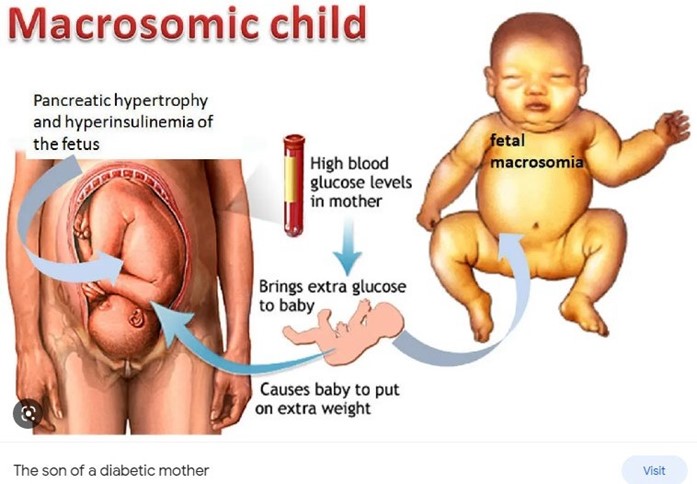The practical nurse (PN) is caring for a client who has been diagnosed with gestational diabetes mellitus. Which complication should the PN recognize as the greatest risk to the fetus if euglycemia is not maintained?
Low birth weight.
Preterm birth.
Cleft palate.
Macrosomic newborn.
The Correct Answer is D
Gestational diabetes mellitus (GDM) is a type of diabetes that occurs during pregnancy. If euglycemia, or normal blood glucose levels, is not maintained during pregnancy, the fetus can be at risk for a number of complications. The greatest risk to the fetus in this situation is the development of a macrosomic newborn, or a newborn that is significantly larger than average. This occurs because the excess glucose in the mother's bloodstream is passed on to the fetus, leading to excessive fetal growth.
Macrosomia can lead to complications during delivery, such as shoulder dystocia, and can increase the risk of injury to both the mother and the baby. While low birth weight and preterm birth are also potential complications of GDM, macrosomia is considered the greatest risk to the fetus if euglycemia is not maintained. Cleft palate is not typically associated with GDM.

Nursing Test Bank
Naxlex Comprehensive Predictor Exams
Related Questions
Correct Answer is D
Explanation
Feeling sad or having a depressed mood is a common symptom of depression. Asking the client if they often feel sad can help the practical nurse (PN) assess for depression.
While recent stresses (A), sleep changes (B), and dietary habits (C) may also be relevant to the client's situation, asking if the client often feels sad is the most important question for the PN to ask in order to further assess for depression.
Correct Answer is B
Explanation
Detoxification can be a difficult and potentially dangerous process, and it's important for the client to receive proper monitoring and medication management during this time. The hospital is equipped to provide this level of care and support. The practical nurse should explain this to the client and emphasize the importance of receiving proper care during detoxification.
Whether you are a student looking to ace your exams or a practicing nurse seeking to enhance your expertise , our nursing education contents will empower you with the confidence and competence to make a difference in the lives of patients and become a respected leader in the healthcare field.
Visit Naxlex, invest in your future and unlock endless possibilities with our unparalleled nursing education contents today
Report Wrong Answer on the Current Question
Do you disagree with the answer? If yes, what is your expected answer? Explain.
Kindly be descriptive with the issue you are facing.
